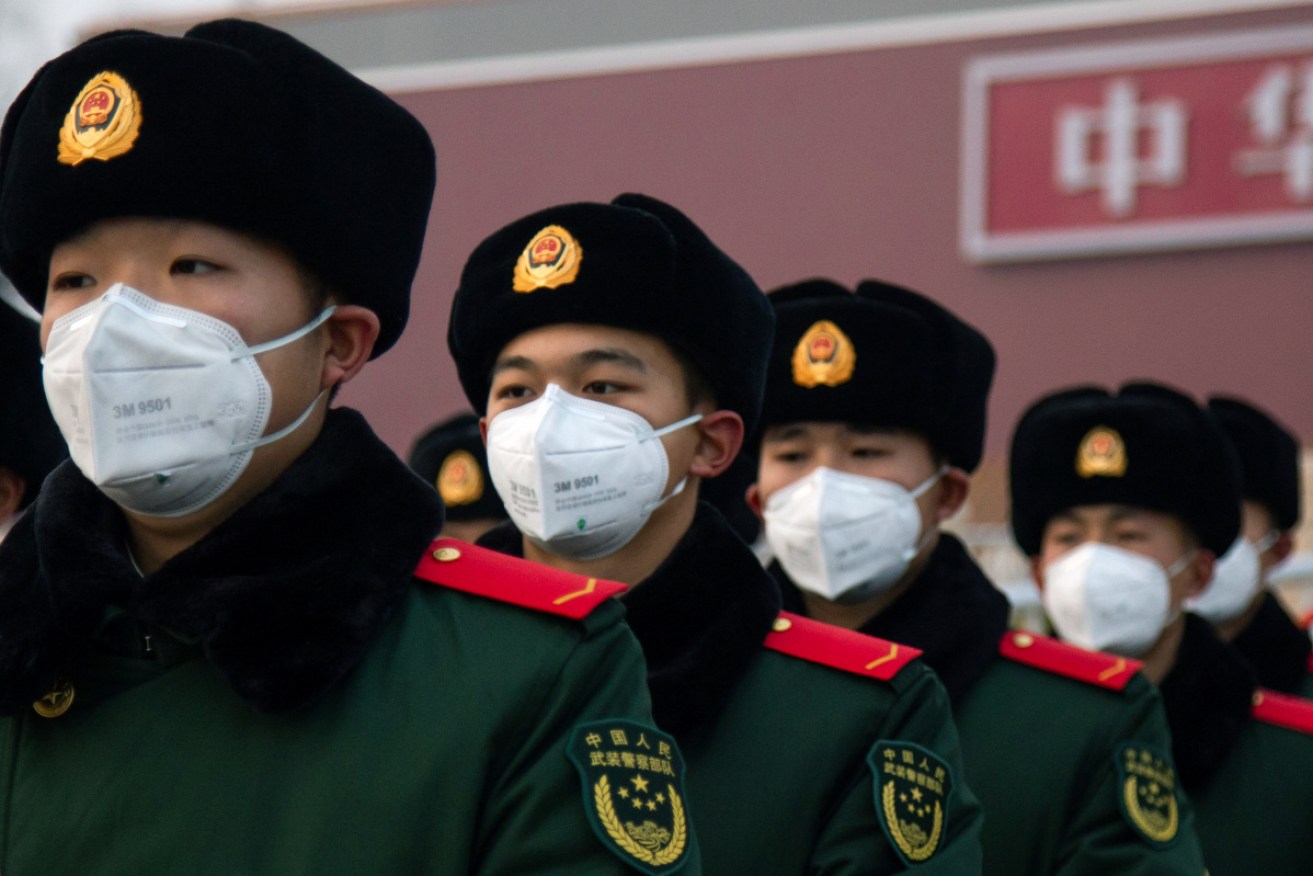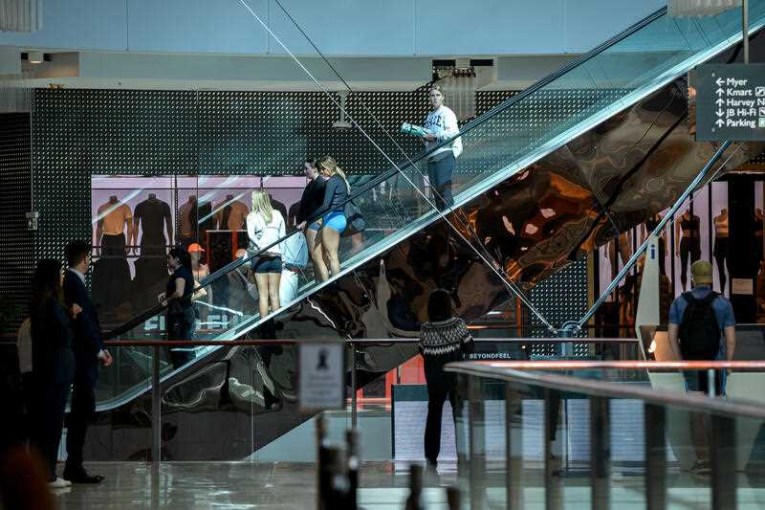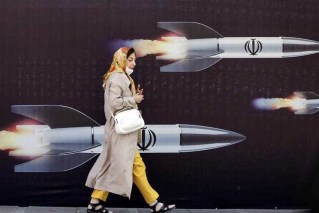Coronavirus cover-up: How secretive China put politics and reputation before global health

Police officers stand in front of the Tiananmen Gate in Beijing as authorities shut down tourist attractions on January 26. Photo: Getty
A mysterious illness had stricken seven patients at a hospital, and a doctor tried to warn his medical school classmates.
“Quarantined in the emergency department,” the doctor, Li Wenliang, wrote in an online chat group on December 30, referring to patients.
“So frightening,” one recipient replied, before asking about the epidemic that began in China in 2002 and ultimately killed nearly 800 people.
“Is SARS coming again?”
In the middle of the night, officials from the health authority in the central city of Wuhan summoned Li, demanding to know why he had shared the information.
Three days later, police compelled him to sign a statement that his warning constituted “illegal behaviour”.
The illness was not SARS, but something similar: A coronavirus that is now on a relentless march outward from Wuhan, throughout the country and across the globe, killing at least 304 people in China and infecting more than 14,380 worldwide.
The government’s initial handling of the epidemic allowed the virus to gain a tenacious hold.
At critical moments, officials chose to put secrecy and order ahead of openly confronting the growing crisis to avoid public alarm and political embarrassment.
- Related: WHO declares a global emergency
A reconstruction of the crucial seven weeks between the appearance of the first symptoms in early December and the government’s decision to lock down the city, based on two dozen interviews with Wuhan residents, doctors and officials, on government statements and on Chinese media reports, points to decisions that delayed a concerted public health offensive.
In those weeks, authorities silenced doctors and others for raising red flags.
They played down the dangers to the public, leaving the city’s 11 million residents unaware they should protect themselves.
They closed a food market where the virus was believed to have started, but told the public it was for renovations.
Their reluctance to go public, in part, played to political motivations as local officials prepared for their annual congresses in January.
Even as cases climbed, officials declared repeatedly that there had likely been no more infections.

Dr Li Wenliang before and after contracting coronavirus himself. The 34-year-old is separated from his pregnant wife and their child as he recovers. He told The New York Times: “There should be more openness and transparency.”
By not moving aggressively to warn the public and medical professionals, public health experts say, the Chinese government lost one of its best chances to keep the disease from becoming an epidemic.
“This was an issue of inaction,” said Yanzhong Huang, a senior fellow for global health at the Council on Foreign Relations who studies China.
“There was no action in Wuhan from the local health department to alert people to the threat.”
The first case, the details of which are limited and the specific date unknown, was in early December.
By the time authorities galvanised into action on January 20, the disease had grown into a formidable threat.

Exhausted staff sleep in a Wuhan hospital corridor. Photo: Twitter
It is now a global health emergency.
It has triggered travel restrictions around the world, shaken financial markets and created perhaps the greatest challenge yet for China’s leader, Xi Jinping.
The crisis could upend Xi’s agenda for months or longer, even undermining his vision of a political system that offers security and growth in return for submission to iron-fisted authoritarianism.
On the last day of 2019, after Li’s message was shared outside the group, authorities focused on controlling the narrative.
Police announced they were investigating eight people for spreading rumours about the outbreak.
That same day Wuhan’s health commission, its hand forced by those “rumours”, announced that 27 people were suffering from pneumonia of an unknown cause.
Its statement said there was no need to be alarmed.
“The disease is preventable and controllable,” the statement said.
Li, an ophthalmologist, went back to work after being reprimanded.
On January 10, he treated a woman for glaucoma. He did not know she had already been infected with the coronavirus, probably by her daughter. They both became sick. So would he.
Hazmat suits and disinfectants
Hu Xiaohu, who sold processed pork at the Huanan seafood wholesale market, sensed by late December that something was amiss.
Workers were coming down with nagging fevers. No one knew why but, Hu said, several were in hospital quarantine.
The market occupies much of a block in a newer part of the city, sitting incongruously near apartment buildings and shops catering to the growing middle class.
It is a warren of stalls selling meats, poultry and fish, as well as more exotic fare, including live reptiles and wild game that some in China prize as delicacies.
According to a report by the city’s centre for disease control, sanitation was dismal, with poor ventilation and garbage piled on wet floors.
In hospitals, doctors and nurses were puzzled to see a cluster of patients with symptoms of a viral pneumonia that did not respond to the usual treatments.
They soon noticed that many patients had one thing in common: They worked in Huanan market.
On January 1, police officers showed up at the market, along with public health officials, and shut it down.
Xinhua News Agency reported that the market was undergoing renovation, but that morning, workers in hazmat suits moved in, washing out stalls and spraying disinfectants.
It was, for the public, the first visible government response to contain the disease.
The day before, on December 31, national authorities had alerted the World Health Organisation’s office in Beijing of an outbreak.

A female patient, who was tested positive for coronavirus, is treated in Vietnam. Photo: AAP
City officials struck optimistic notes in their announcements.
They suggested they had stopped the virus at its source. The cluster of illnesses was limited. There was no evidence the virus spread between humans.
“Projecting optimism and confidence, if you don’t have the data, is a very dangerous strategy,” said Alexandra Phelan, a faculty research instructor in the department of microbiology and immunology at Georgetown University.
“It undermines the legitimacy of the government in messaging. And public health is dependent on public trust.”
Nine days after the market closed, a man who shopped there regularly became the first fatality of the disease, according to a report by the Wuhan Health Commission, the agency that oversees public health and sanitation.
The 61-year-old, identified by his last name, Zeng, already had chronic liver disease and a tumour in his abdomen, and had checked into Wuhan Puren Hospital with a raging fever and difficulty breathing.
Authorities disclosed the man’s death two days after it happened.
They did not mention a crucial detail in understanding the course of the epidemic. Zeng’s wife had developed symptoms five days after he did.
She had never visited the market.
The race to identify a killer
About 20 miles from the market, scientists at the Wuhan Institute of Virology were studying samples from the patients checking into the city’s hospitals.
One of the scientists, Zheng-Li Shi, was part of the team that tracked down the origins of the SARS virus, which emerged in the southern province of Guangdong in 2002.
As the public remained largely in the dark about the virus, she and her colleagues quickly pieced together the new outbreak was related to SARS. The genetic composition suggested a common initial host: Bats.
The SARS epidemic began when a coronavirus jumped from bats to Asian palm civets, a cat-like creature that is legally raised and consumed. It was likely that this new coronavirus had followed a similar path – possibly somewhere in or on the way to the Huanan market or another market like it.

A sphere covered with spikes to penetrate and infect host cells, the coronavirus looks like an old-fashioned floating mine.
Around the same time, Li and other medical professionals in Wuhan started trying to provide warnings to colleagues and others when the government did not.
Lu Xiaohong, the head of gastroenterology at City Hospital No.5, told China Youth Daily that she had heard by December 25 that the disease was spreading among medical workers – a full three weeks before authorities would acknowledge the fact.
She did not go public with her concerns, but privately warned a school near another market.
By the first week of January, the emergency ward in Hospital No.5 was filling; the cases included members of the same family, making it clear that the disease was spreading through human contact, which the government had said was not likely.
No one realised, the doctor said, that it was as serious as it would become until it was too late to stop it.
“I realised that we had underestimated the enemy,” she said.
‘Politics is always No.1’
As the virus spread in early January, the mayor of Wuhan Zhou Xianwang was touting futuristic health care plans for the city.
It was China’s political season, when officials gather for annual meetings of People’s Congresses – the Communist Party-run legislatures that discuss and praise policies. It is not a time for bad news.
When Zhou delivered his annual report to the city’s People’s Congress on January 7 against a backdrop of bright red national flags, he promised the city top-class medical schools, a World Health Expo, and a futuristic industry park for medical companies.
Not once did he or any other city or provincial leader publicly mention the viral outbreak.
“Stressing politics is always No.1,” the governor of Hubei Wang Xiaodong told officials on January 17, citing Xi’s precepts of top-down obedience.
“Political issues are at any time the most fundamental major issues.”

WHO director-general Tedros Adhanom Ghebreyesus (centre) declares a global health emergency over coronavirus. Photo: Getty
Shortly after, Wuhan went ahead with a massive annual potluck banquet for 40,000 families from a city precinct, which critics later cited as evidence that local leaders took the virus far too lightly.
The government’s efforts to minimise public disclosure persuaded more than just untrained citizens.
“If there are no new cases in the next few days, the outbreak is over,” Guan Yi, a respected professor of infectious diseases at the University of Hong Kong, said on January 15.
The World Health Organisation’s statements during this period echoed the reassuring words of Chinese officials.
It had spread.
Thailand reported the first confirmed case outside China on January 13.
–The New York Times








